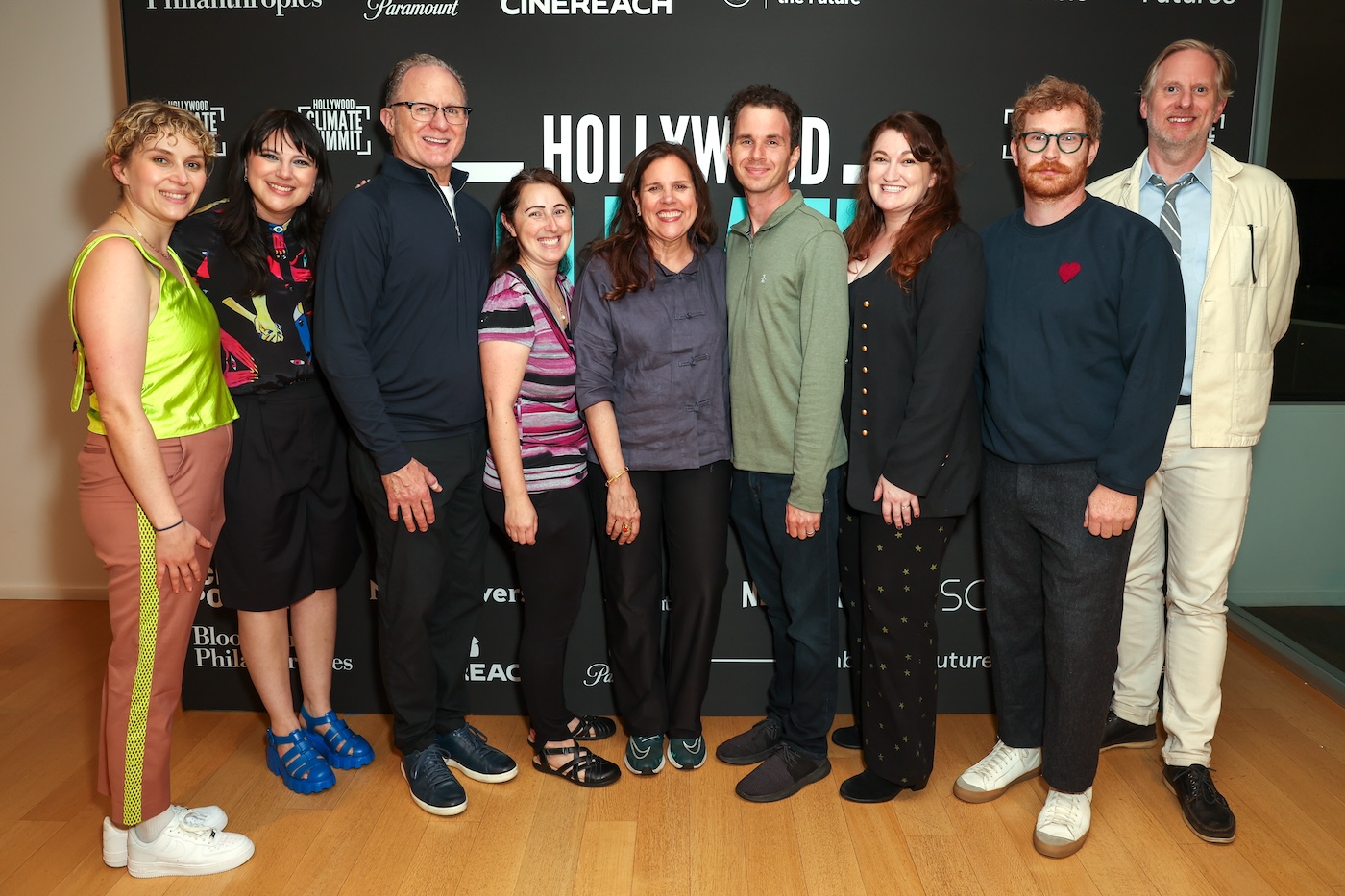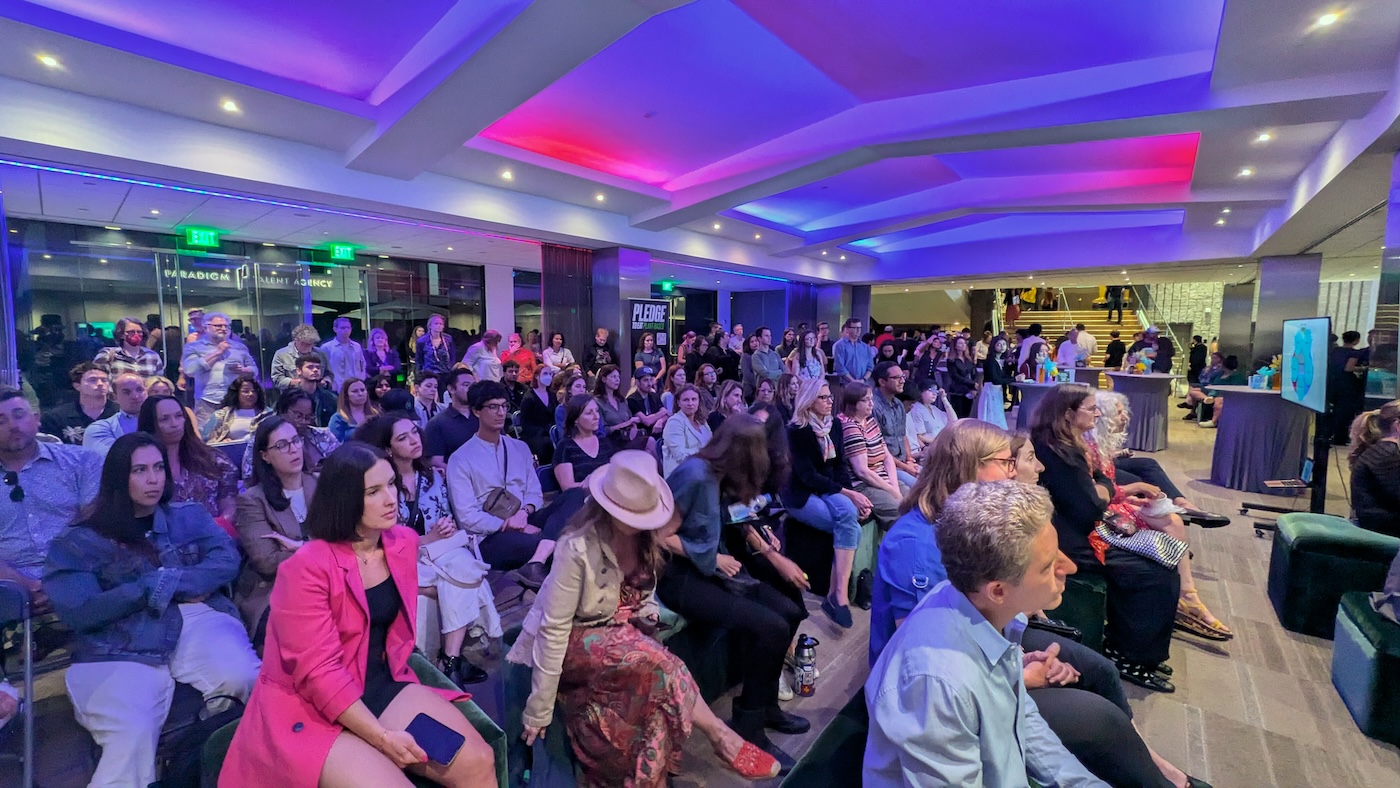Union sustainability activists from across the industry come together at the 2024 Hollywood Climate Summit to share their knowledge – and action items.
by Margot Lester / Photos by Katherine Bomboy
In late June, film and television community members gathered at the Hollywood Climate Summit, held at the Academy of Motion Pictures Arts and Sciences Samuel Goldwyn Theater, to explore options for reducing our collective impact on the environment. As Local 600 Camera Technician Summer Marsh, an NEB Alternate and Contract Action Team (CAT) member, described, “the summit showcased panels that ranged from above-the-line individuals – writers, producers, and directors – integrating green behaviors into their on-screen climate narratives to below-the-line departments implementing sustainability practices during film production. From macro to micro levels, this holistic approach demonstrates how climate action can unify the film industry.”
The four-day summit hosted the first-ever public inter-guild panel discussion on climate and environmental issues, titled “Building a Culture of Sustainability on Set.” Panel members included Allison Elvove, camera operator and Western Region chair of Local 600’s sustainability committee; Lydia Dean Pilcher, co-founder of the Producers Guild of America Sustainability Task Force and co-chair of DGA’s Sustainable Future committee; Director Todd Holland, DGA member and 1st vice president and Sustainable Future committee co-chair; Production Designer Michael Krantz, a member of the Art Directors Guild Local 800 and United Scenic Artists Local 829; and Max Schwartz, Chair, IATSE Local 728 Eco Committee (Studio Electrical Lighting Technicians).
“We’ve been working together for a few years behind the scenes having different conversations,” Pilcher told the audience. “It’s been powerful to be part of the surge from unions and guilds in the entertainment industry coming together with sustainability committees forming in every production city. It’s a nationwide movement.”
Union and guild representatives recounted to Hollywood Climate Summit attendees their efforts to reduce environmental impact and improve crew safety. “Local 600 is an Institutional Ally of the Labor Network for Sustainability,” Elvove explained. “Their motto is powerful: ‘making a living on a living planet.’ We are all climate workers, and at the end of the day, taking action to curb the effects of climate change is intrinsically tied to protecting our jobs. To fundamentally make a difference on set, we need to change people’s mindsets and to do that, we need to draw the connection between why being a member of the camera department means we should care about the impact our productions are having on climate change.”
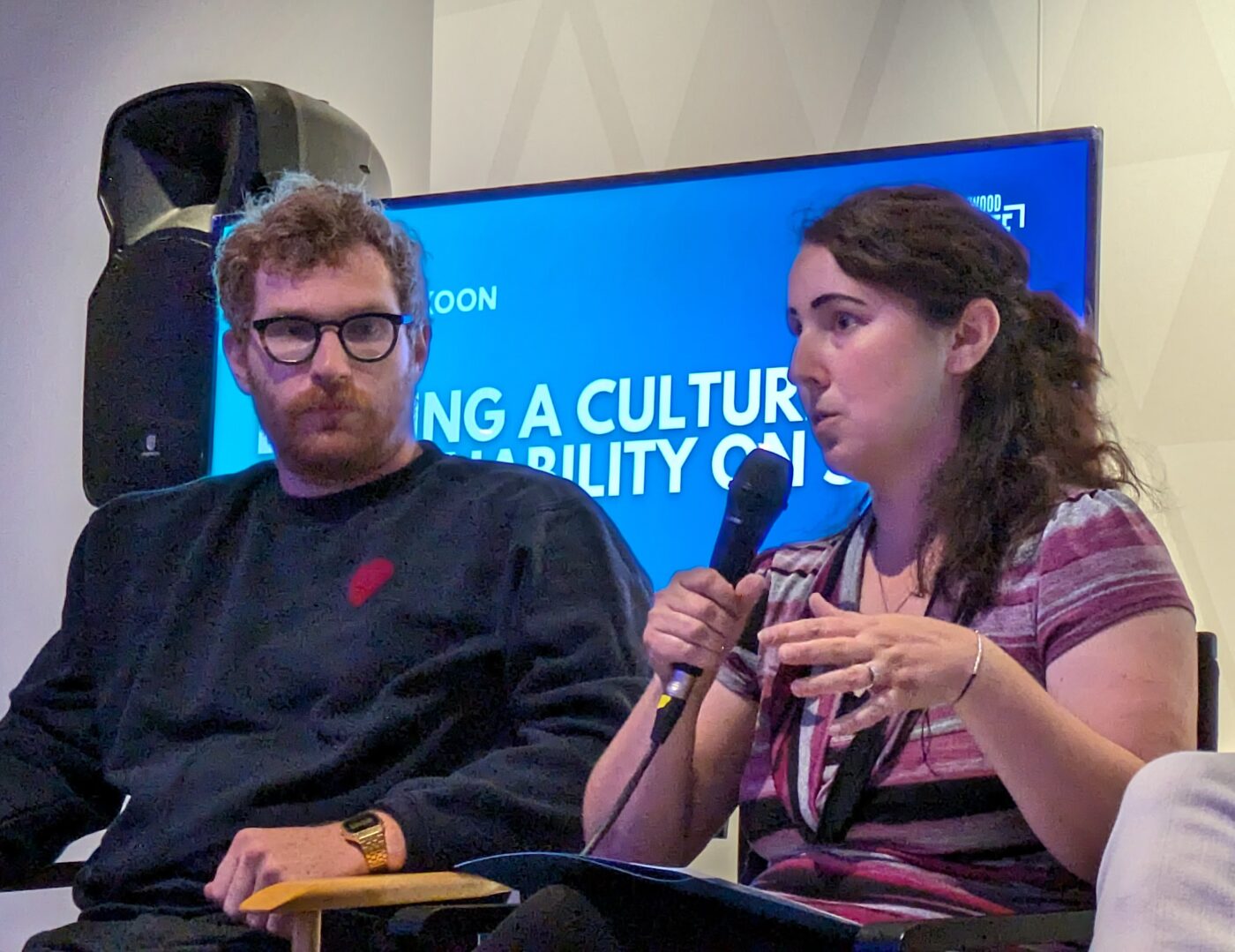
Local 600 sustainability action items Elvove noted included encouraging waste reduction through a partnership with camera rental houses across the country to recycle P-Touch cartridges. “Traditionally, productions treat these items as disposable, which leads to significant waste,” Marsh added. “That’s why many people end up hoarding leftover expendables at home until they either find another use for them or they become unusable. Imagine if we all came together and shared our surplus expendables. It would not only reduce waste but also foster a sense of community and sustainability. It’s a beautiful idea that could have a positive impact on both the environment and our industry.”
The Local 600 Sustainability Committee has not only focused on camera expendables that have reached their end of life; the group has also considered circularity solutions for partially used items such as gaffer and paper tape at the end of a show. To that end, ICG has partnered with EcoSet, an environmentally-focused production resource that helps implement zero-waste practices.
“They take materials from events and productions, organize it, sort it, and recirculate it back into the community for film students or the theater, film, and TV community,” Elvove explained. “And it’s free, so anyone can make an appointment and grab this material. Anytime between 8:30 and 4:00 p.m. Monday through Friday, you can go to EcoSet, no appointment necessary, drop off camera expendables, and know that they’re going to get into the hands of someone else who will get to reuse them. The goal is material circularity as much as possible, not letting things go into the waste bin.”
The idea for a “circularity of materials” was inspired by Local 600 2nd AC Seth Craven (co-chair of ICG’s Young Workers Group) and his “Kits of Kindness” Program, for which Craven collected expendables and tools to build out kits to gift to new AC’s. Now Local 600’s Sustainability Committee and EcoSet will pull select expendables to go into the Kits of Kindness, and the rest will be available to the public at EcoSet.
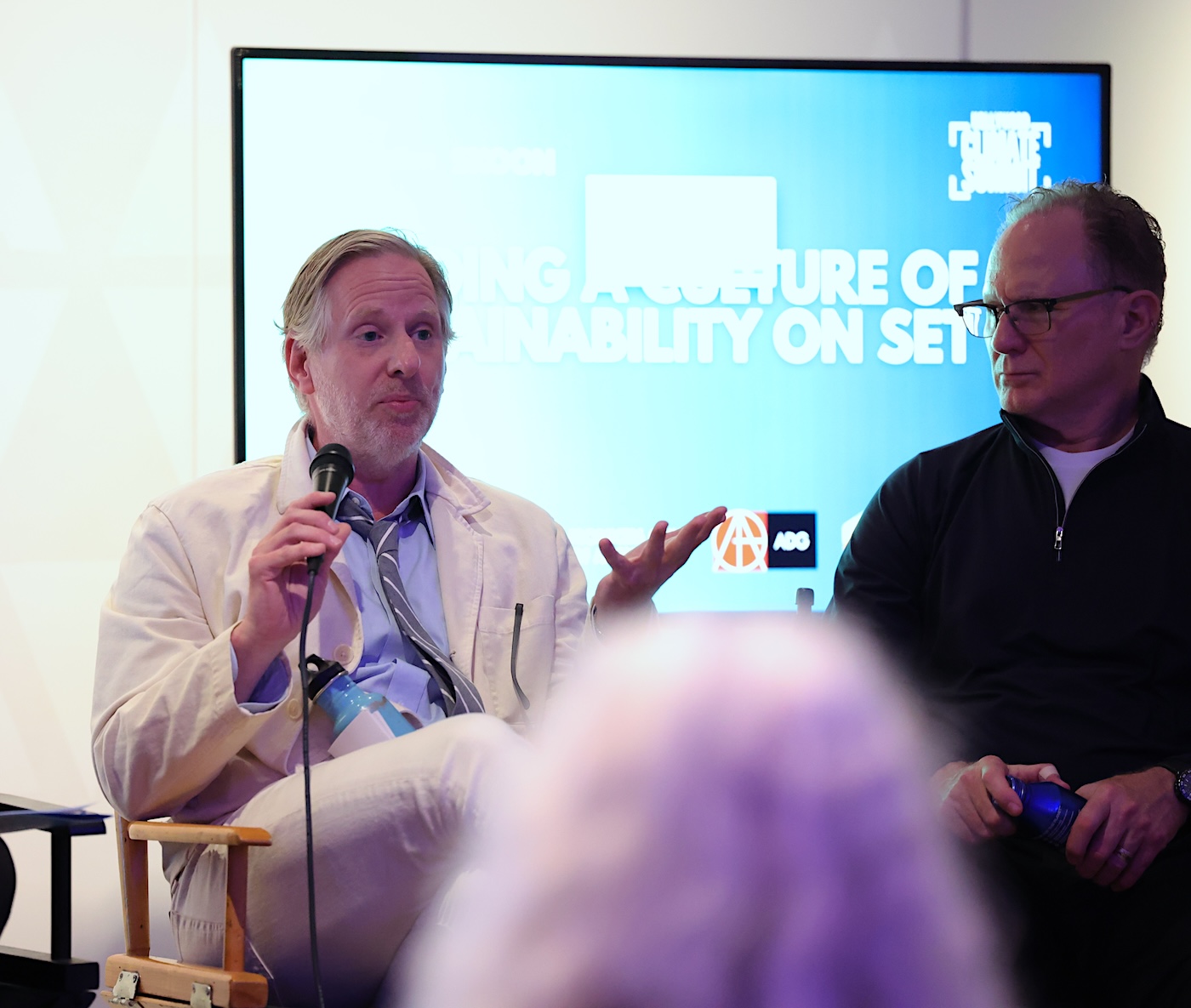
Elvove explains that “recycling and circularity are examples of actionable steps that can be taken to make camera departments more sustainable, but this alone is not enough. We need ideological change.” She shared how the Union’s Sustainability committee, with the support of many ICG directors of photography, brought forward a formal resolution to the National Executive Board, framing the importance of sustainable production solutions in the context of health and safety. On February 4, 2024, the National Executive Board passed the Local 600 Sustainability Resolution.
“It declares our commitment as members of a labor union, and on behalf of the safety of our crews, to encourage and endorse carbon-neutral productions through sustainable on-set practices,” Elvove stated. This includes decreasing diesel fuel use with sustainable fuels like renewable diesel and transitioning to electric grid tie-ins and hybrid location power production. These efforts contribute to achieving industry net zero. “We’re proud of this resolution and feel this is a defining moment toward positive future change,” Elvove said. “It was a turning point in how we frame sustainability in the context of what we do for our work.”
Alex Coyle, an ICG 2nd AC, and another Sustainability Committee member, noted that “having a healthy work environment is critical to our safety as laborers. We have to work in the temperature extremes. The smoke from fires elsewhere impacts our air quality. The health of the planet has a direct correlation to our health. Not many people know what a sustainable set can look like, so the idea of budgeting for sustainability can feel very vague and ideological. In reality, there are so many actionable items we can take: having meatless Mondays, choosing non-virgin materials, powering basecamp with solar and a set with clean generators, redistributing materials EOS for use anywhere other than the landfill, hiring locally, and being intentional when we roll and cut the camera. What it boils down to is making time for these discussions in prep!”

Panel members from other Guilds shared some of their accomplishments and plans. These included the DGA’s Sustainable Future Committee’s Sustainability Pro-Tips, a free online resource “tailored to very busy people who need to get information in an organized and push-button world,” Holland described. “We’re all in the business of last-minute crises, and we need what we need when we need it. But, now, we all have to be the ones to lead, speak up, and say, ‘Business as usual just doesn’t work.’”
The DGA site is organized by Guild category and includes, among other tools, a detailed climate-action checklist and an emissions/cost calculator. Industry members can enter data on diesel use, compare it to a cleaner option, and see the differential in cost and emissions. The DGA is also a proponent of Meatless Mondays and vegetarian/vegan catering at awards and other events. It provides workshops on sustainable leadership, climate storytelling, and more, as Holland explained, “to empower us to create sustainably.”
IATSE Local 728’s ECO Committee has been focused on retooling energy use to reduce climate impact and improve worker health and safety. As Schwartz detailed: “On set, we have a very high energy demand, so a lot of what we work towards is informing members about what you can do with this technology that is reliable, safe, helpful – and not only on a large scale but on a small scale.”
Schwartz gave the example of on-set generators, which are extremely loud – up to 6090 decibels – threatening crew hearing and impacting production. Quieter electric generators could be deployed closer to the action, including in tunnels, national parks, and residential areas. “There’s less toll on your back when you’re not laying down 60- to 70-pound cable for hundreds of feet,” Schwartz added. “Low-wattage LEDs are not demanding as much of the product, so you can extend its lifespan.”
Local 728 is also quelling concerns over job loss related to the transition to electric power. “Some just see it as a battery you plug into,” Schwartz explained. “So, we spend time explaining how you’ll retain your job; [the technology] is just making it a little easier and safer. We have rigorous classes to make the most proficient set lighting technicians in the world, and we’re working on creating classes around this technology, too.”
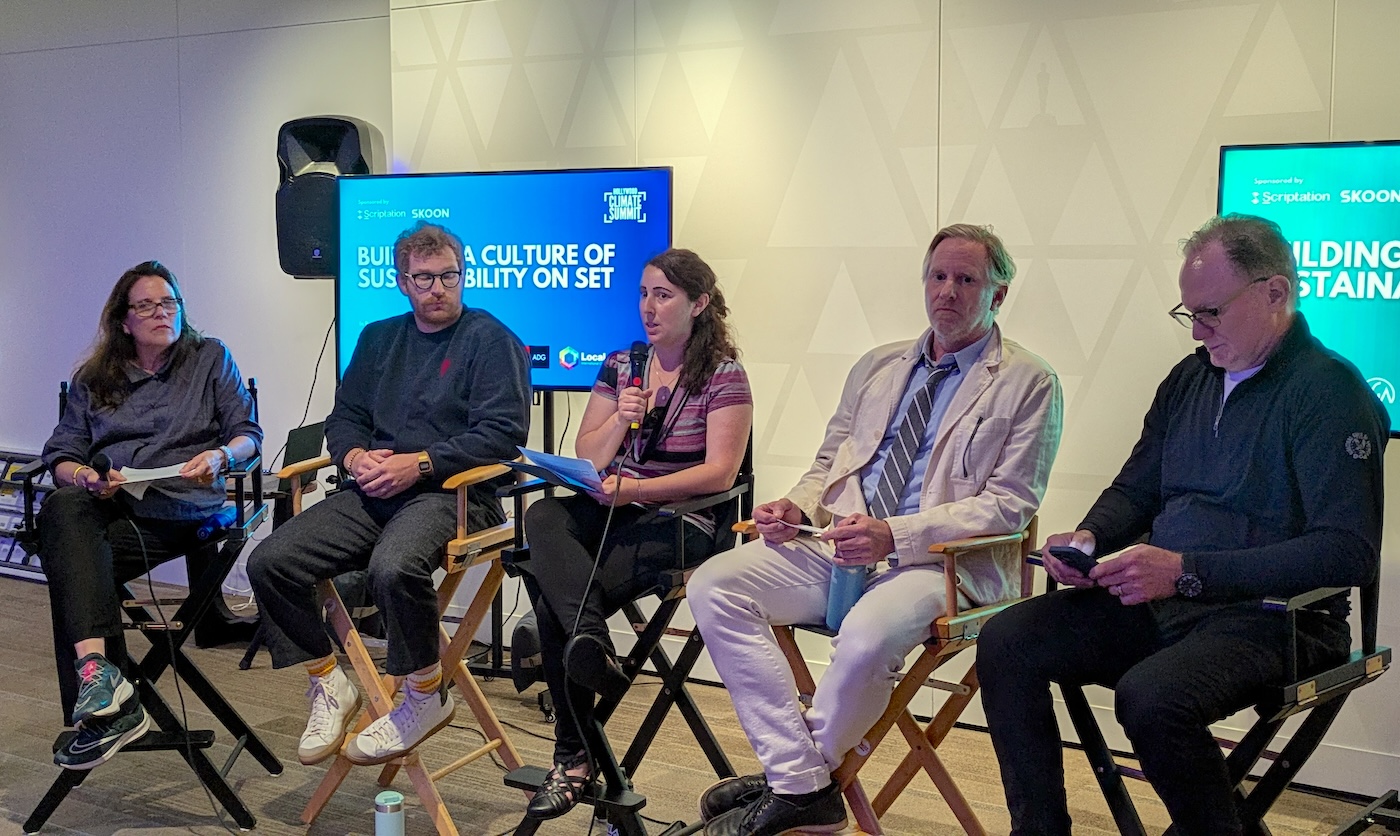
Locals 800 and 829 have been encouraging their members to “exercise our influence in where something is being shot, or how a story is being told, or where locations are, how they’re grouped together – all of those decisions impact the entire production,” Krantz explained. “Oftentimes I’m able to move a production from the tremendous stage-build or some absurd location that’s too far away, and just say in private to my directors or producers, ‘We really should try to make that because it’s efficient, and not just from an environmental standpoint, but from a crew standpoint. Rather than having to bring on twice as many set dressers to service or pre-dress a location on the other side of town, consolidating production saves time while protecting the planet and the crew.” Krantz added that many industry guilds are educating members to understand how working sustainably can be cheaper when materials are sourced from previous productions. “There’s plenty of ways that it becomes a much more cost-effective endeavor. There’s a snowball effect.”
One such joint effort the panel highlighted is the Inter Guild & Unions Sustainability Alliance, which has two climate-action working groups. Its Clean Energy Group identifies and deploys alternatives to diesel – the largest contributor to the industry’s carbon footprint. “It can be anywhere from 48 percent to 56 percent of a production’s carbon footprint,” Pilcher reported. “That is across the board – an independent film, a regular studio feature, a tent pole, or even an episode of television. The technology is available now to power your base camps and overnight trucks completely with clean energy. You can also power video village and small sets without burning diesel.”
The Clean Energy working group includes members of IATSE Local 600, DGA, PGA, IATSE Local 728 (Los Angeles), Local 52 (New York), Local 479 (Atlanta), and Teamsters Local 817 (New York). The Climate Storytelling Group, a WGA/PGA joint effort, assists members in identifying creative resources and opportunities “to create and expand our knowledge for climate narratives on screen,” Pilcher noted. Research from the Yale Center for Climate Change Communication has identified four story elements that move people: personal stories that connect through shared feelings and values, the storyteller’s lived experience of climate realities, representation of diverse communities, and communication of hope and the impact of individual and collective action.
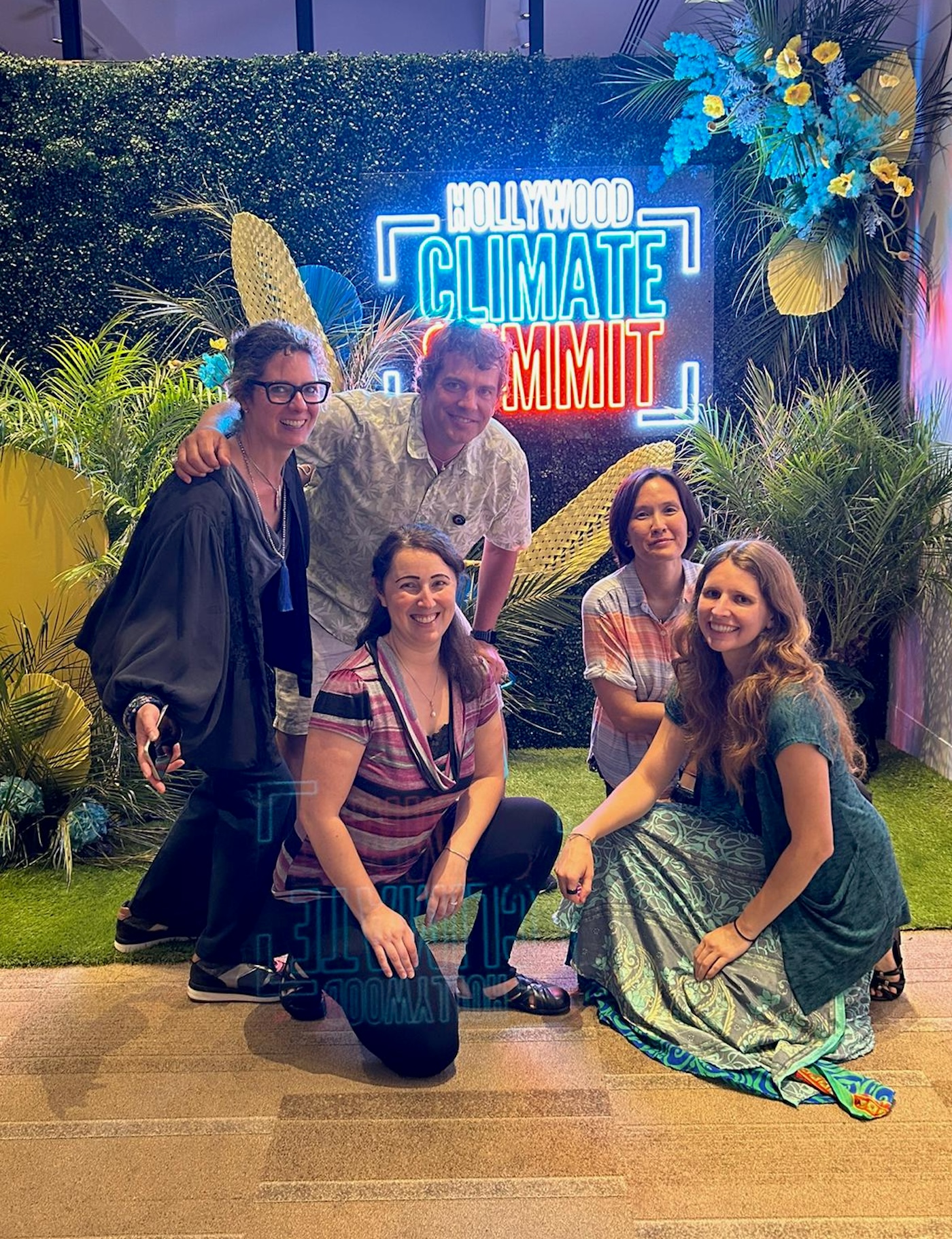
Despite some troubling climate trends, the panelists urged optimism. The key, they all agreed, is for each individual to use his or her position, whatever it is, and use it now. “There is no point where your voice is irrelevant,” Holland stressed. “Whatever you do, whatever you can inspire your production to do is better than what we were [doing] before you arrived. Later is too late.” Added Pilcher, “Go where you can make the most impact. Set those goals in a way you can achieve them. Go where can you make the most impact. Set those goals in a way you can achieve them. Meanwhile, we need to engage our industry to promote crew training and the hiring of sustainability advisors on set to support departments; and we need more studios to step up and mandate sustainable practices on productions.”
Elvove closed the session with this message: “I know this feels like an uphill battle, but there has been some serious momentum in the last couple of years. In the last year alone there are five to eight new green committees [that have been formed] within IATSE. It’s a big deal, right? We are moving forward. And…the more that we talk together interdepartmentally, that’s where we’re going to affect change. One person is powerful, but we are more powerful together.”
The message resonated with Local 600 Unit Still Photographer Katherine Bomboy, MSc Sustainability, MBA, who said: “The panel was proof positive that climate action forms novel coalitions of individuals and entities ready to solve any barrier to sustainable production practices. From advocating for food donation and composting, materials circularity or renewable diesel for production power generation; the PGA, DGA, Art Directors, and IATSE locals, led by my union, the International Cinematographers Guild, are all-hands-on-deck for sustainable sets. And we invite SAG, WGA, the AMPTP, and our global production partners to join our tenacious pursuits for a better climate future for all our members, audiences, and the planet.”
